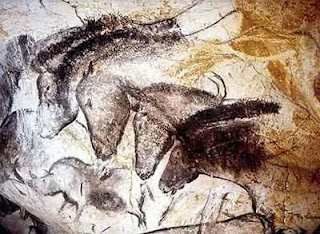Essay 5
Essay # 1A
Title: Them and Us
Question:
How
artistically similar, or different, do you think prehistoric people
were compared to modern man and what singular force or need continues
to drive the artistic needs and human expressions of the 21st
century?
Part
1
Summary:
Overall I think prehistoric people and modern man artistically were
very similar and once art was born that force or need to continue to
drive artistic needs came from prehistoric people.
Reason:
The reason for this question I think was for us to see how art
originated and how different is it today compared to prehistoric
times.
Purpose:
The purpose for this question was for us to find out the similarities
between modern man and prehistoric people.
Direction:
The direction I took in answering this was to find out why
prehistoric people created this type of art and connect it to modern
art.
Impressions:
What impressed me the most was how many theories there were to the
meaning of cave paintings all these years.
Part 2
Prehistoric
people and modern man I think connect with art for the same reason.
It fills them with passion and different outlooks. “The more well
known works of prehistoric people are found in caves in southern and
in central parts of France and northern Spain. The Chauvet cave, near
Vallon-Pont-d`Arc in Southern France is the earliest known site of
prehistoric cave paintings. These dramatic cave paintings included
vital animals like horses, bison, bear, mammoths, deer, owls etc. As
well as hand prints, humans, grids, circle, and dots.”(Art history,
page 9) Art is a way of expressing yourself and these prehistoric
people expressed what was in them such as their interests, needs etc.
In my opinion it was a way for them to express themselves in a
private, secret way and this captivated their interests and their
need of freedom because with art you can freely express yourself.
“Modern art centers instead of on the meaning of a work for an
elite target audience or the attempt to pose challenging questions or
unsettle deep-sated cultural ideas.” (Art history, XXVII) Both
prehistoric and modern man use art to freely express themselves but
also to communicate. Back then these images were powerful. As modern
man uses art to demonstrate, symbols, signs, advertisement etc.
Prehistoric people within a group used these images of animals to
teach them the appearance and the behavior of them and also how to
hunt them. “The most important new ability however,was the capacity
to think symbolically: To create representational analogies between
one person, animal, or object, and another, and to recognize and to
remember those analogies.”(Art history, page 3, 4) This development
marks the evolutionary origin of art and I think what started art is
the force that still drives artistic needs today which is the ability
to create something in your mind and that image has the ability to
give someone knowledge, curiosity, pleasure etc.








